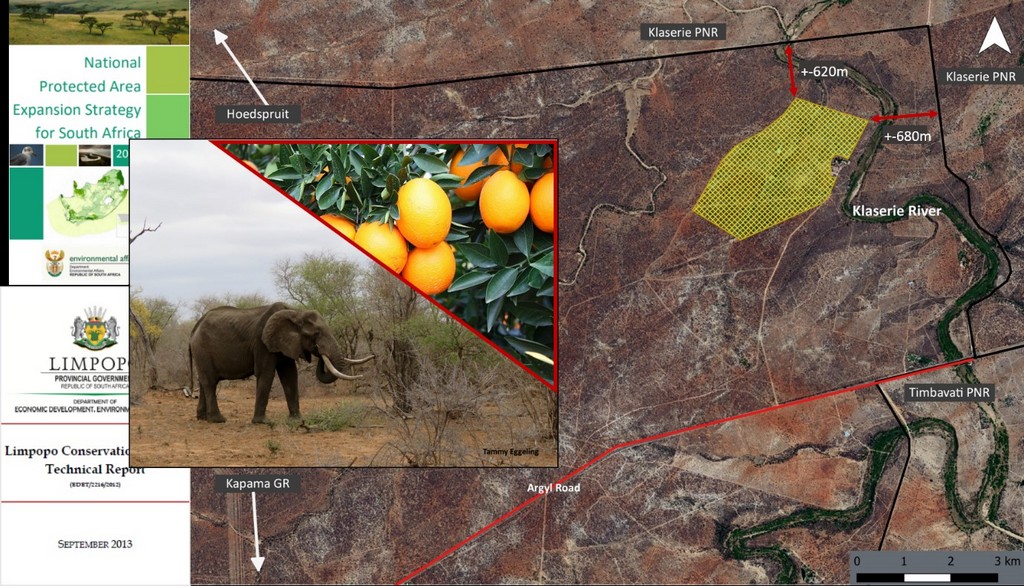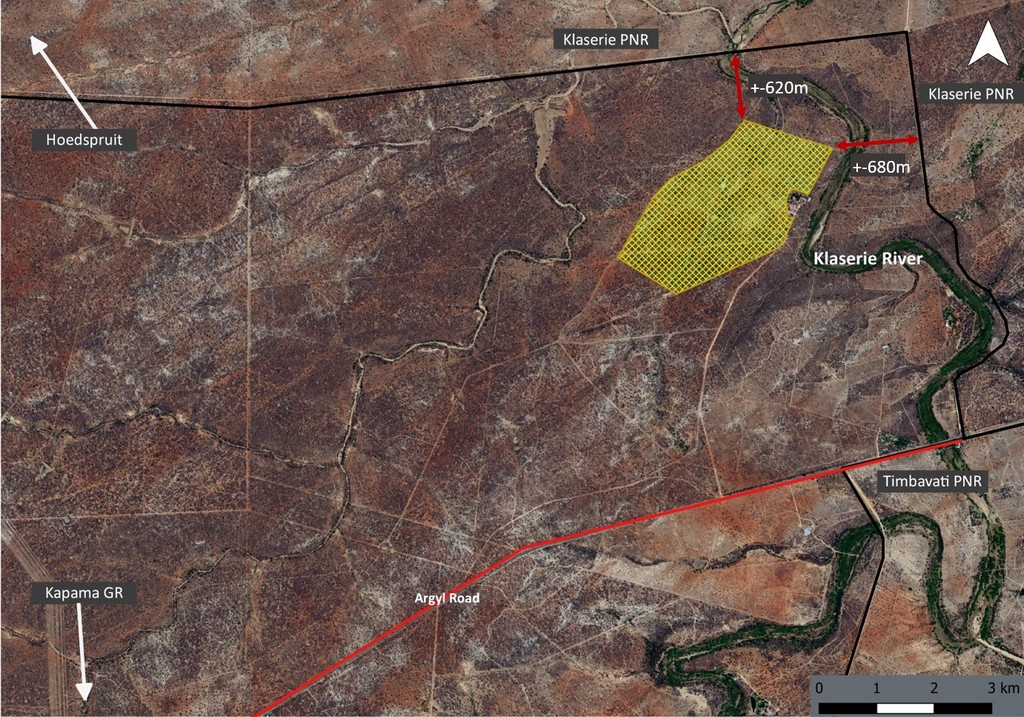
OPINION POST by “Concerned Protected Area Managers”
Following up on the previous article which highlighted the serious environmental concerns of a proposed citrus development to border South Africa’s largest intact Protected Area, LEDET (Limpopo Economic Development, Environment and Tourism) has ignored all concerns and given the farm development the go-ahead. By doing this, LEDET has failed not only the Hoedspruit community, they have also put the Protected Areas Network at risk by destroying the continuity of the landscape and habitat, while also failing to secure a future for fauna and flora supported within the surrounding ecosystems.
This seemingly inconsequential act of approving the development severely undermines national and provincial conservation efforts to maintain ecosystem resilience for future climate change implications. The greater consequence of this development will derail the plan of expanding the area under conservation of the Associated Private Nature Reserves (APNR) to Hoedspruit, and reduce the opportunity for the region to become a cornerstone for conservation (see Figure 1 below).

The Environmental Impact Assessment (EIA) is incorrect in claiming that the 120 ha piece of land that is about to be irreversibly destroyed by planting citrus trees is not unique. Although similar land types are relatively widespread throughout the Lowveld, this approval highlights the lack of understanding of the urgency to protect these areas and keep them intact. This was the very reason that track of land was classified as a Protected Areas Buffer Zone and Critical Biodiversity Area (CBA2). For an ecosystem to function properly it must not be fragmented as this reduces its resilience and leads to environmental collapse. LEDET’s approval shows a general short-sightedness by the relevant authorities, and a lack of understanding of the environmental impacts of one development at a time. This cumulative effect of negative impacts is equivalent to the “death by a thousand cuts” for our environment.
If similar developments are to be authorised, there will be no viable areas left to create crucial ecological networks.

This approval of a commercial farm within a critical biodiversity area begs the question why the bigger picture for the region is being blatantly disregarded in favour of an inappropriate agricultural development. How would a citrus farm, which not only borders a Protected Area, falls on classified land but also occurs on an important river, benefit the surrounding landscape? How justifiable is it to allow for the deliberate degradation of a Protected Area through the cumulative impacts of excessive water extraction and the addition of pesticides, chemicals and other pollutants? Not only would the development decrease the area’s ecological integrity, but it would have immense impacts on wildlife movements within the Protected Area. An attractant such as citrus will lure all kinds of animals from the APNR, diminishing its purpose to act as a safe haven.
Unfortunately, as previously reported by others, there appears to be an apparent trend for inappropriate development applications being granted without due consideration of the real and severe impacts on the environment. We can only hope that by standing together as a community, we will be able to turn the tide and protect what is left of our natural environment. There has to come a time when the importance of safeguarding our natural environment takes preference over the economic benefit of a selected few.
PLEASE SIGN THIS PETITION, and help us increase the pressure on LEDET to recognise the EIA appeal application: Prevent a citrus development from compromising South Africa’s largest Protected Area
To comment on this story: Login (or sign up) to our app here - it's a troll-free safe place 🙂.![]()






